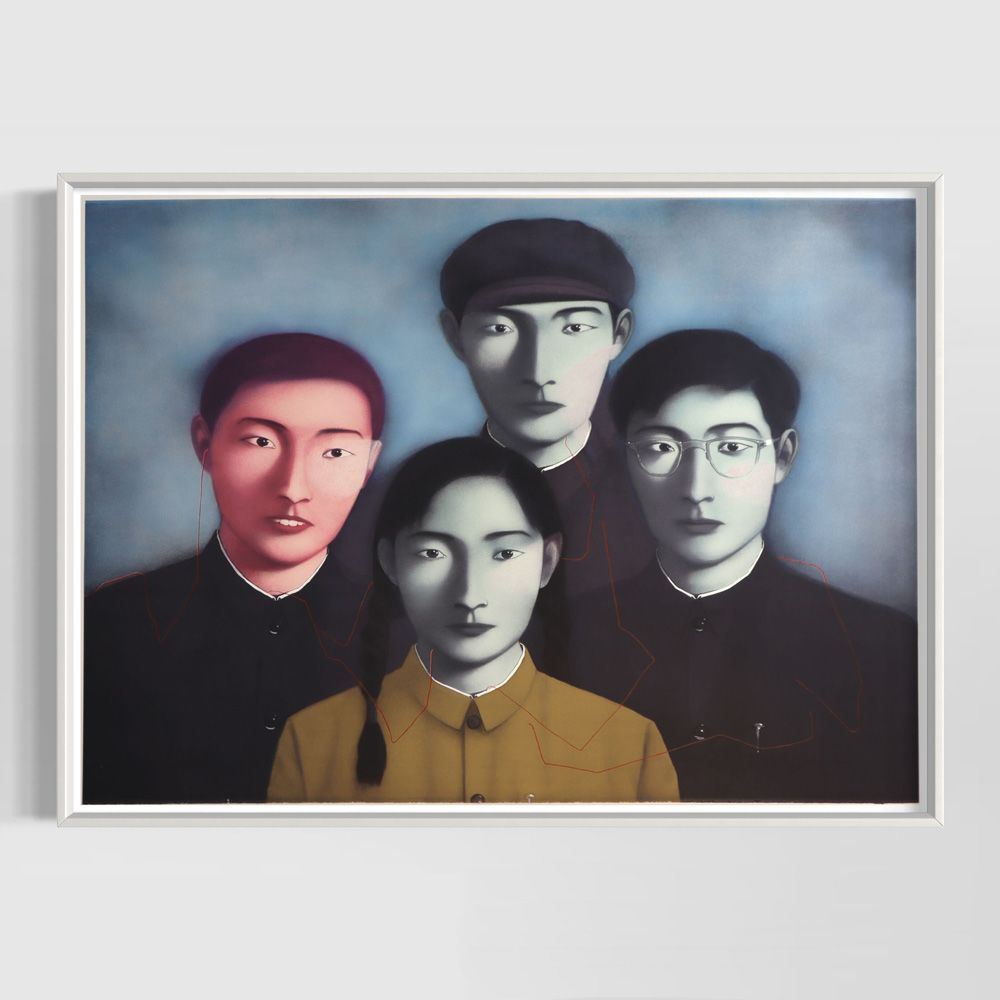
Inspired by contemporary tensions in China, Zhang Xiaogang makes grim, unsettling portraits that consider identity and heredity in a collectivist state. The artist draws on influences that include political iconography, Chinese charcoal drawings, distorted Surrealist compositions, and family portraits from the Cultural Revolution era. Xiaogang’s portraits depict an endless genealogy of imagined forebears and progenitors, each unnervingly similar and distinguished by minute difference. He wanted to paint the characters as if they look the same. They can be a man or a woman. He wants to show that they are like cloned people and they have the same thoughts. His paintings, often executed in grisaille with bursts of bright yellow or red at the center, explore how varied individual histories are flattened into conformist representations. Zhang has exhibited in New York, Beijing, Tokyo, London, Paris, and Hong Kong, among other cities. His work belongs in the collections of the Long Museum, the M+ Sigg Collection, the San Francisco Museum of Modern Art, the Shenzhen Art Museum, and the Guggenheim Museum. Zhang’s practice also includes sculpture.
“ I drew a person smiling once, but I don't think I am good at drawing people smiling. I'm better at drawing people spacing out „
